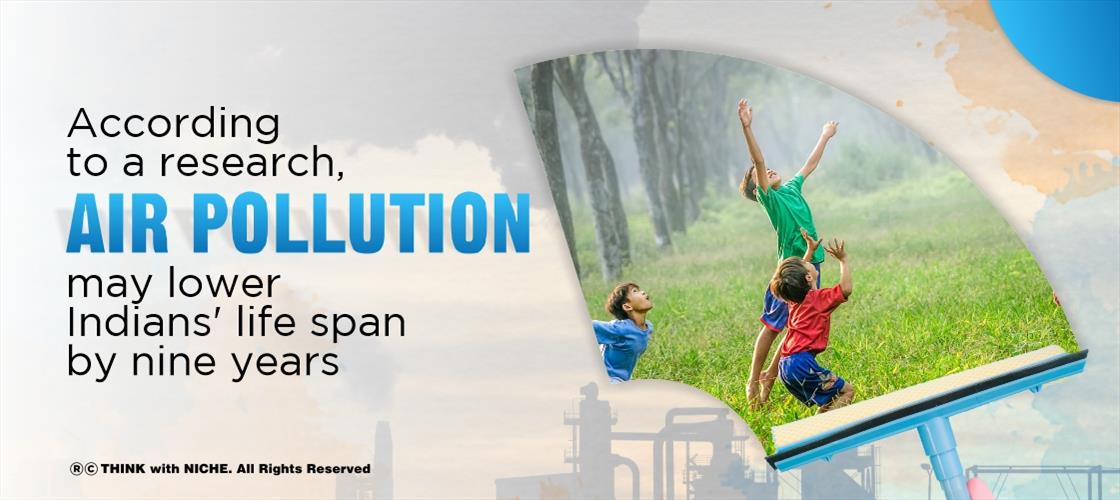
Post Highlights
Through a study, the University of Chicago, Energy Policy Institute discover how much longer a person can live if they breathe in clean air. Their result showed that India's high levels of air pollution had expanded geographically over time, which can be very dangerous for human beings. #ThinkWithNiche
Air pollution is Likely to Cut 9 years of Life Expectancy of 40% of Indians!
The study by the University of Chicago's Energy Policy Institute ascertains how much longer a person can live if they breathe clean air. It is said that India's high levels of air pollution have expanded geographically over time.
Air quality has significantly worsened in Maharashtra and Madhya Pradesh, the study said.
A new study has claimed that air pollution is likely to reduce the life
expectancy of about 40 percent of Indians by more than nine years. It
has been conducted by the Energy Policy Institute of the University of
Chicago.
The study said that more than 480 million
people living in central, eastern, and northern India, including Delhi,
endure significantly high pollution levels. It also said that India's
high levels of air pollution have "alarmingly expanded geographically
over time."
The report particularly highlighted the
situation in Maharashtra and Madhya Pradesh, where an average person is
now losing an additional 2.5 to 2.9 years of life expectancy.
To arrive at the life expectancy number, the
researchers compared the health of people exposed to different levels
of long-term air pollution and applied the results to various places in
India and elsewhere.
The report has said that if the pollution
level in 2019 continues, the people living in north India are on track
to lose more than nine years of life expectancy.
In 2019, India's average particulate matter
concentration was 70.3 microgram per cubic meter (μg/m3 ), the highest
in the world and seven times the World Health Organisation's (WHO)
guideline of 10 μg/m3, the report said.
Noted that the South Asian region, which
includes Bangladesh, India, Nepal, and Pakistan, accounts for nearly a
quarter of the global population and consistently ranks among the top
five most polluted countries in the world.
"Due to South Asia's high population and
pollution concentrations, the region accounts for 58 percent of total
life years lost due to particulate pollution exceeding the WHO
guideline," it said.
It further said that an average person in
South Asia would live 5.6 years longer if pollution were reduced to meet
the WHO guidelines.
Lauding India's National Clean Air Program (NCAP), launched in 2019 to
rein in dangerous pollution levels, the report said that "achieving and
sustaining" the NCAP goals would raise the country's overall life
expectancy by 1.7 years and that of New Delhi 3.1 years.
The NCAP aims to reduce pollution in
the 102 worst-affected cities by 20%-30% by 2024 by ensuring cuts in
industrial emissions and vehicular exhaust, and introducing stringent
rules for transport fuels and biomass burning, and reducing dust
pollution. It will also entail better monitoring systems.
For More Sustainability Articles Click Here
Comments
Post a Comment